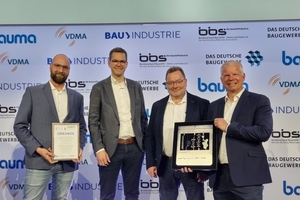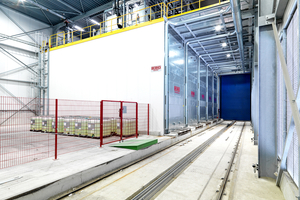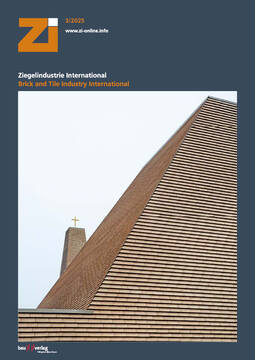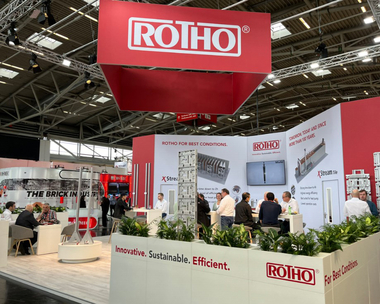Award-winning innovations
Rotho is the winner of the international bauma Innovation Award 2025 in the Climate Protection category.
The competition is a joint project between bauma and renowned industry associations.
On the eve of the Munich trade fair, a festive gala with around 450 guests was held to announce and present this year‘s innovation awards in five categories.
A high-calibre jury made up of representatives from the worlds of science and business nominated three innovations per category from 208 applications in several rounds, and, together with specialised journalists, selected the respective winners.
The prize honours sustainable innovations with a high practical benefit that make a contribution to energy and resource efficiency, among other things.
In the climate protection category, Rotho impressed the expert jury with its ProCarbonCure system.
Federal Minister Klara Geywitz and Bavarian State Minister Hubert Aiwanger joined the laudators in congratulating the winners and presenting the awards.
The international bauma Innovation Award goes back to the German Construction Machinery Day, at which cutting-edge technologies from Germany were honoured until 2004. It has been awarded in this form every three years since 2007, jointly organised by the VDMA, VDMA Services GmbH, bauma and the leading associations of the German construction industry, HDB, ZDB and bbs.
Innovative system technology for storing CO2 in concrete products
With the ProCarbonCure system, large quantities of CO2 are stored sustainably and permanently in products made from concrete or steel slag. This gives construction products, such as paving stones, bricks or facing bricks, a significantly lower CO2 footprint. The process therefore makes an important contribution to making concrete products greener in the future.
To realise the process, it was necessary to develop a completely new concrete curing process. The specialised disciplines of hardening and drying had to be combined in order to be able to store large quantities of carbon dioxide in the concrete. The result was a closed process that gives the CO2 time to penetrate deep into the concrete without a significant proportion being emitted back into the atmosphere. The process has already been successfully implemented on an industrial scale.




